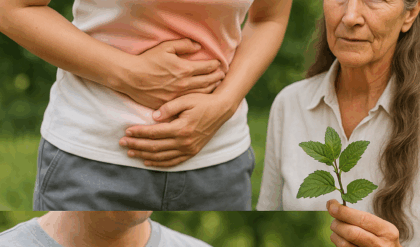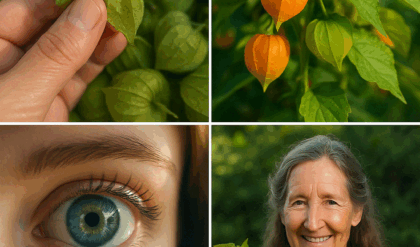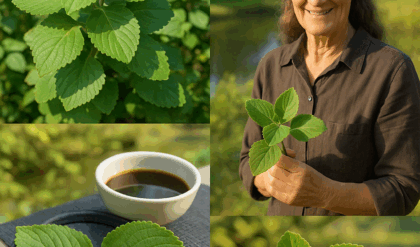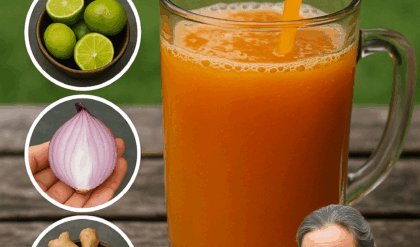🌿 What if a towering weed, often ignored in fields and roadsides, held the key to unlocking vibrant health? Mullein, with its soft leaves, vibrant flowers, and sturdy roots, has been a cornerstone of traditional medicine for centuries, promising relief from coughs to inflammation. Bold claims about curing chronic diseases or transforming wellness have sparked curiosity, but how much is grounded in science? In this article, we’ll uncover the remarkable benefits of mullein’s leaves, flowers, and roots, debunk exaggerated health promises, and share safe ways to harness its potential. Get ready to discover why this unassuming herb is stealing the spotlight in natural remedies!
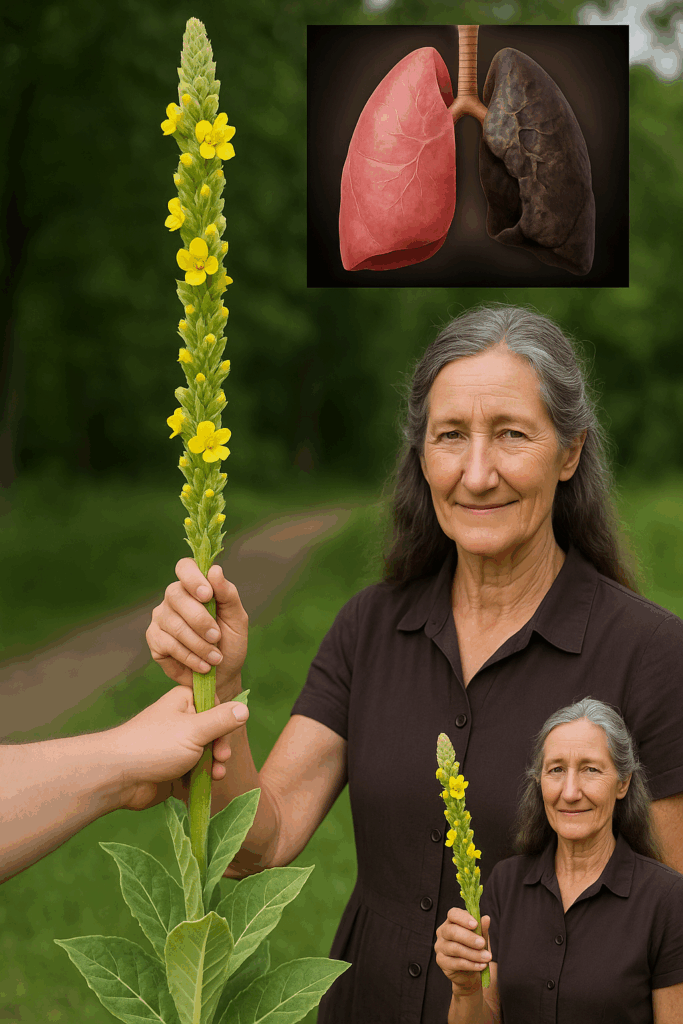
Mullein: Nature’s Versatile Healer
Mullein (Verbascum thapsus), a biennial plant native to Europe, Asia, and North Africa, now thrives globally, often found in sunny, disturbed soils. Its tall stalks, fuzzy leaves, and bright yellow flowers make it unmistakable. Known as “candlewick plant” or “flannel leaf” for its soft texture, mullein has been used in herbal traditions to treat respiratory issues, skin conditions, and more. Its leaves, flowers, and roots each offer unique properties, making it a versatile remedy.
Rich in bioactive compounds like saponins, flavonoids, and mucilage, mullein is celebrated for its soothing and anti-inflammatory effects. But can it live up to claims of curing serious ailments or boosting overall health? Let’s explore the evidence to separate fact from fiction.
The Science Behind Mullein’s Benefits
🌱 Mullein’s therapeutic potential stems from its diverse chemical profile, including:
- Saponins: Offer expectorant and anti-inflammatory effects.
- Flavonoids: Antioxidants that combat oxidative stress.
- Mucilage: Soothes irritated tissues and reduces inflammation.
These compounds contribute to mullein’s reputation as a respiratory and skin remedy. However, claims of curing chronic diseases, such as cancer or diabetes, lack robust human studies, and its benefits are best viewed as supportive rather than curative.
Key Benefits of Mullein
1. Supports Respiratory Health
🌸 Mullein is a go-to herb for respiratory ailments. Its expectorant properties help clear mucus, easing symptoms of coughs, bronchitis, and asthma. The mucilage in its leaves and flowers soothes sore throats and inflamed airways. Mullein tea or tincture is often used, but it’s not a cure for chronic respiratory conditions.
2. Soothes Skin and Promotes Healing
Mullein’s anti-inflammatory and antimicrobial properties make it effective for minor wounds, burns, or rashes. A poultice of crushed leaves or a flower-infused oil can reduce swelling and speed healing. However, it’s not a treatment for severe skin diseases like eczema or psoriasis.
3. Reduces Inflammation and Pain
💧 The plant’s anti-inflammatory compounds may alleviate joint pain or muscle soreness when applied topically or consumed as tea. Small studies suggest mullein can reduce inflammation, but it’s not a cure for arthritis or systemic inflammatory conditions.
4. Supports Ear Health
Mullein flower oil, often combined with garlic, is a traditional remedy for earaches. Its soothing and antimicrobial properties may ease discomfort, but it’s not a substitute for medical treatment of ear infections.
5. Aids Digestive Comfort
Mullein’s mucilage can soothe the digestive tract, easing mild bloating or irritation. Its mild diuretic properties may also support detoxification, but it doesn’t treat serious digestive disorders or “detox” the body as some claims suggest.
6. Boosts Antioxidant Defense
Mullein’s flavonoids protect against free radicals, supporting overall wellness. While this may enhance immunity, it’s not a proven preventive for serious diseases like cancer or diabetes.
Practical Ways to Use Mullein
🌼 Incorporating mullein into your routine is straightforward, but caution is essential. Here are safe methods:
- Mullein Tea: Steep 1–2 teaspoons of dried mullein leaves or flowers in hot water for 10 minutes, strain through a fine mesh to remove tiny hairs, and drink up to twice daily for respiratory or digestive support.
- Topical Poultice: Crush fresh mullein leaves into a paste and apply to minor wounds, burns, or inflamed areas for soothing relief.
- Mullein Oil: Infuse mullein flowers in olive oil for 2–3 weeks, strain, and apply to skin irritations or use a few drops for earaches (consult a doctor first).
- Inhalation Steam: Add dried mullein leaves to boiling water, cover your head with a towel, and inhale the steam to ease respiratory congestion.
Harvest mullein from clean, pesticide-free areas, and wash thoroughly to avoid contaminants. The plant’s tiny hairs can irritate, so strain teas carefully. Consult a healthcare professional before use, especially if you have respiratory issues, are pregnant, breastfeeding, or on medications.
Potential Risks and Precautions
⚠️ Mullein is generally safe when used correctly, but risks include:
- Irritation: The plant’s fine hairs can cause skin or throat irritation if not strained properly.
- Allergies: Those sensitive to plants in the Scrophulariaceae family may experience reactions.
- Pregnancy and Breastfeeding: Limited safety data; avoid use unless guided by a professional.
- Drug Interactions: May interact with diuretics or anti-inflammatory medications.
Mullein is a complementary remedy, not a cure for serious conditions. Always seek medical advice for chronic or severe health issues.
Debunking Exaggerated Health Claims
🌟 Social media often hypes mullein as a cure for cancer, diabetes, or even hair growth (from confusion with other plants in prior claims). These assertions are misleading. While preliminary studies suggest mullein’s antioxidants and anti-inflammatory compounds may have health benefits, human evidence for curing serious diseases is absent. Its respiratory benefits are supportive, not curative, and hair growth claims are unproven. Relying on mullein for complex conditions can delay proper treatment, which is risky. Use it as part of a balanced lifestyle under professional guidance.
Why Mullein Deserves Your Attention
Mullein’s accessibility and versatility make it a standout in natural remedies. Its ability to thrive in poor soils supports sustainable herbal practices, aligning with eco-conscious trends. Whether brewed as tea, applied as oil, or used in steam inhalation, mullein offers practical benefits for those exploring holistic wellness.
Its rich history in European, Native American, and herbal traditions adds cultural depth, appealing to those seeking time-tested solutions. Mullein fits seamlessly into wellness-focused lifestyles, but its potency requires moderation and care.
Final Thoughts: Embrace Mullein’s Gentle Power
🌿 Mullein may not cure every ailment or transform your health overnight, but its real benefits are impressive. From soothing coughs to healing minor wounds, this common weed offers a natural path to vitality when used wisely. By incorporating it cautiously, you’re tapping into centuries of herbal wisdom backed by modern insights.
Ready to explore mullein? Brew a cup of tea, try a soothing oil, or experiment with steam inhalation. Share your herbal journey in the comments, and let’s inspire each other to celebrate nature’s healing treasures!
